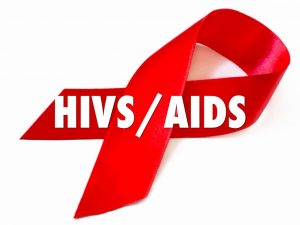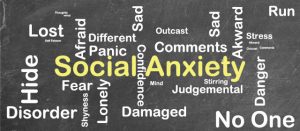
The social impact of AIDS/HIV in India
The social impact of AIDS/HIV in India,“Whenever AIDS has won, stigma, shame, distrust, discrimination and apathy was on its side. Every time AIDS has been defeated, it has been because of trust, openness, dialogue between individuals and communities, family support, human solidarity, and the human perseverance to find new paths and solutions.” – Michel Sidibé, Executive Director, UNAIDS
Acquired Immunodeficiency Syndrome (AIDS) is caused by a virus called HIV or Human Immunodeficiency Virus. The disease changes the immune system, making people very vulnerable to infections and diseases. This vulnerability gets worse as the syndrome progresses, sometimes with fatal results.
HIV is a virus: Specifically, HIV is the virus, which attacks the T-cells (CD-4 cells) in the immune system.
AIDS is a medical condition: AIDS is the syndrome, which appears at an advanced stage of the HIV infection.
The HIV infection can cause AIDS to develop but it is possible to be infected with HIV without developing AIDS. However, without treatment, the HIV infection can progress and, eventually, develop into AIDS in most cases. Once an AIDS diagnosis is made, it will always be a part of a patient’s medical history.
A retrovirus that infects the vital organs and cells of the human immune system, HIV develops in the absence of antiretroviral therapy (ART) – a drug therapy that slows, and can prevent, the growth of new HIV viruses.
The rate of virus progression in various individuals differs widely, depending on many factors including:
- Age
- The body’s ability to defend itself against HIV
- Access to healthcare
- Other infections the patient may have
- The person’s genetic inheritance
- Resistance to certain strains of HIV
- Other factors
Sexual transmission: Contact with infected sexual fluids (rectal, genital, or oral mucous membranes) while having unprotected sex with someone infected with HIV
Perinatal transmission: A mother can pass the infection on to her child during childbirth, pregnancy and breastfeeding
Blood transfusion: Transmission of HIV through blood transfusion is extremely low in developed countries, thanks to meticulous screening and precautions. This is often not the case in the developing world
Early symptoms of HIV infection
Many people with HIV have no symptoms for several months, or even years, after being infected. Others may develop symptoms similar to flu, usually two to six weeks after being infected by the virus. The symptoms of early HIV infection may include fever, chills, joint pains, muscle aches, sore throat, sweats (particularly at night), enlarged glands, red rash, tiredness, general weakness and weight loss.
Myths and facts about HIV and AIDS
There are many misconceptions about HIV and AIDS which are not based on scientific and medical facts. The virus CANNOT be transmitted by:
- shaking hands
- hugging
- casual kissing
- sneezing
- touching unbroken skin
- using the same toilet
- sharing towels
- sharing cutlery
- mouth-to-mouth resuscitation or other forms of “casual contact”
Is there treatment for AIDS and HIV?
Currently, there is no vaccine or cure for HIV, but certain treatments have evolved which are much more effective and better tolerated – improving the patients’ general health and quality of life considerably – by just taking one pill a day.
Certain treatments can slow the course of the condition, allowing most infected people the opportunity to live long and relatively healthy lives. Starting HIV antiretroviral treatment early is crucial. According to the World Health Organization’s guidelines, issued in June 2013, early treatment improves the quality of life, extends life expectancy and reduces the risk of transmission.
To prevent being infected with HIV, medical professionals advise taking the following precautions:
Avoid the dangers of unprotected sex: Having sex without a condom can put a person at risk of being infected with HIV and other sexually transmitted infections (STIs).
Drug abuse and needle sharing: Intravenous drug use is an important factor in HIV transmission, especially in developed countries. Sharing needles can expose users to HIV and other viruses, such as hepatitis C.
Body fluid exposure: Exposure to HIV can be prevented by employing precautions to reduce the risk of exposure to contaminated blood. Healthcare workers should use barriers (gloves, masks, protective eyewear, shields, and gowns).
Pregnancy: Some treatments can harm the unborn child. To protect the baby’s health, delivery through cesarean section may be necessary. HIV-infected mothers should not breastfeed.
The importance of education: This is an important factor in reducing risky behavior that results in HIV/AIDS.
Social stigma associated with AIDS
The fear surrounding the growing HIV epidemic in the 1980s persists even today. At the time, since very little was known about HIV and how it is transmitted, the disease scared people because of their fear of being infected.
This fear, to this day, means that lots of people still believe that HIV and AIDS:
- Still ends in death
- The syndromes’ association with behaviors that large numbers of people still disapprove of – such as homosexuality, drug use, sex work or infidelity
- That the syndrome is transmitted through sex, which is a taboo subject in some cultures
- The infection is because of personal irresponsibility or moral flaws that deserve to be punished
- False information about how the virus is transmitted, giving rise to irrational behavior and misconceptions about personal risk
What is the level of awareness about AIDS in India?
According to a comprehensive survey undertaken by UNDP post-2005, “HIV and AIDS are a serious challenge for the developing as well as the developed world. India, with an estimated 5.206 million people living with HIV in 2005, accounts for nearly 69 percent of the HIV infections in the South and South-East Asian region. This is despite it being a low prevalence country with an overall adult HIV prevalence rate of 0.91 percent.”
“India has six high prevalence states Andhra Pradesh, Karnataka, Maharashtra, Tamil Nadu, Manipur, and Nagaland. Of these Andhra Pradesh has recorded the highest prevalence of two percent among the antenatal clinic attendees and 22.8 percent among STD clinic attendees in 2005. Given the overall low prevalence of HIV, focus so far has been on studying the AIDS/HIV impact at the level of the individual and households“, the survey emphasizes.
In conclusion, we quote studies carried out by the World Bank Group in 2012, “The Government of India estimates that about 2.40 million Indians are living with HIV (1.93-3.04 million) with an adult prevalence of 0.31% (2009). Children (<15 years) account for 3.5% of all infections, while 83% are the in age group 15-49 years. Of all HIV infections, 39% (930,000) are among women. India’s highly heterogeneous epidemic is largely concentrated in only a few states – in the industrialized south and west, and in the north-east. The four high prevalence states of South India (Andhra Pradesh – 500,000, Maharashtra – 420,000, Karnataka – 250,000, Tamil Nadu – 150,000) account for 55% of all HIV infections in the country. West Bengal, Gujarat, Bihar, and Uttar Pradesh are estimated to have more than 100,000 PLHA each and together account for another 22% of HIV infections in India.”








